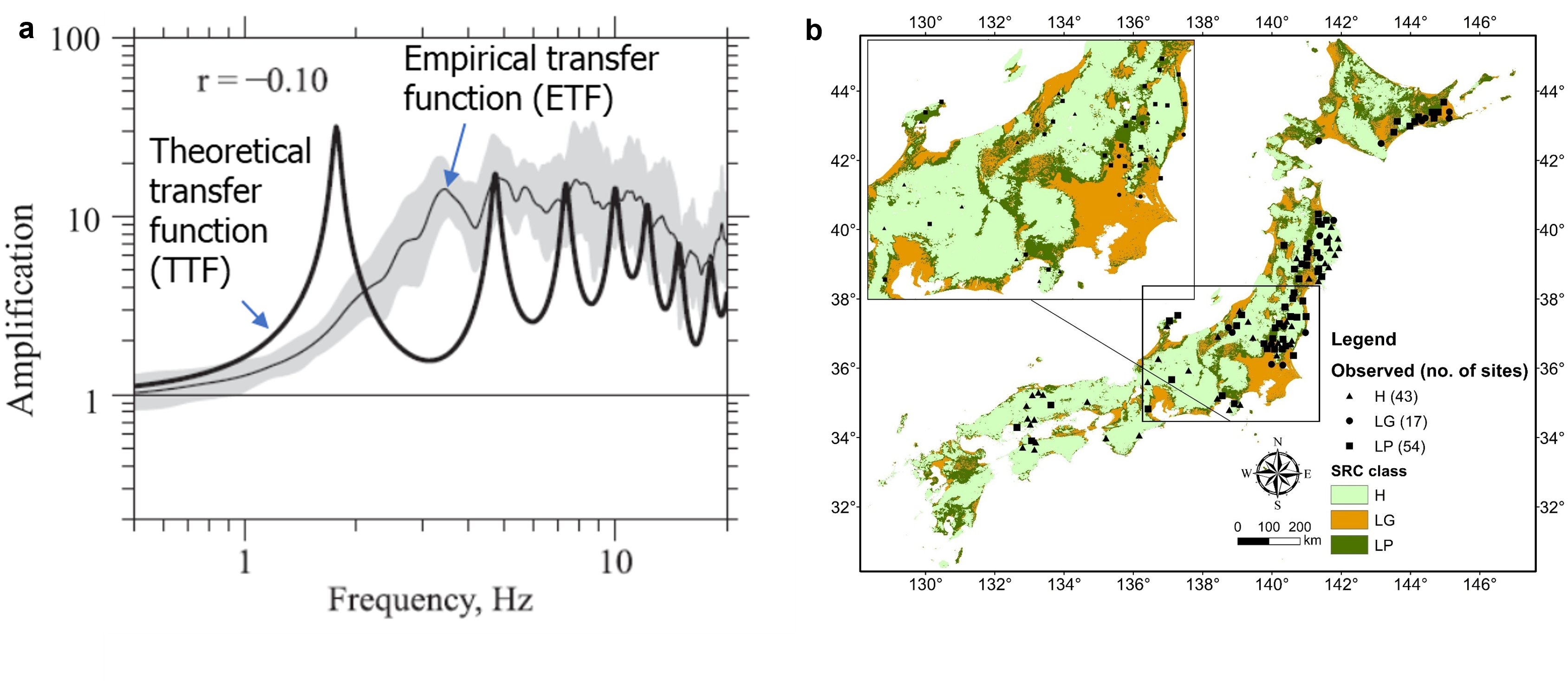Geospatial Surrogate Models for Site Response Complexity Assessment
less than 1 minute read
The term site response complexity describes the discrepancy between observed site response (i.e., empirical transfer function ETF) and theoretical site response (i.e., theoretical transfer function TTF) predicted using the widely-used one-dimensional site response methods (i.e., SH1D). I derived TTF for ~700 vertical array sites using SH1D simulations and compared them with ETF derived from a large ground motion dataset. I observed noticeable trends between site response complexity and topography: Good-matching sites are mostly located in flat sedimentary basins (where the SH1D assumptions are most valid), and poor-matching sites are often located near mountain/basin edges, and high-interevent-variability sites are located within mountainous areas.

